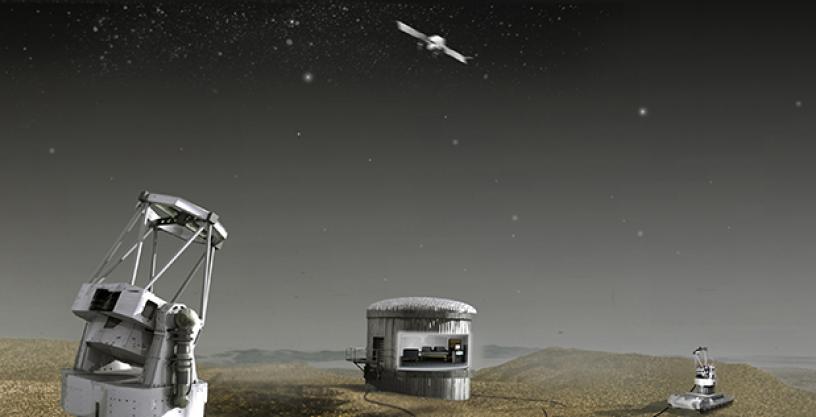
Summary
Military satellites are critical sources of communications and data for today’s operations environments.
Through DARPA’s Phoenix program, useable antennas or solar arrays from retired satellites in geosynchronous orbit (GEO – 36,000 kilometers above earth) could be removed and potentially repurposed as components for new satellites to provide vital mission support.
However, identifying cooperating satellites from which to harvest an array is a difficult and lengthy task using current ground-based satellite imaging techniques. By introducing precise fiber optic control to ground-based telescopes, this challenge may be overcome. DARPA’s Galileo program seeks to bridge the precision fiber optic controls and long-baseline astronomical interferometry technical communities to enable imaging of objects in GEO faster than is possible today.
Current technology for imaging objects in space uses astronomical long baseline interferometers, which rely on several interconnected telescopes grouped together to measure the difference in phases of light reflected off an astronomical object to form an image.
Today’s state-of-the-art astronomical interferometers, however, are limited in the angles they can view space objects due to a complicated combination of evacuated light pipes (that can be several hundred feet long), turning mirrors and the active metrology required between telescopes to establish an extremely high-precision optical path.
Since the fixed light pipes limit the telescope movement to one-dimension (e.g., a telescope on rails that can only move along a single axis), the telescopes rely on movement of the astronomical object itself to provide the multiple light phase measurements needed.
Systems using fixed light pipes aren’t well suited for imaging objects quickly in GEO whose orbital periods match the earth’s rotation and therefore don’t move much relative to earth’s surface.
Galileo seeks to introduce mobile telescopes that would allow multi-angled views for capturing light phase measurements to image objects in GEO more quickly than is possible today.
To achieve this, Galileo envisions flexible fiber optic cable (instead of fixed light pipes) to transport light from participating telescopes to a white light interferometer to create an image.
This program is now complete
This content is available for reference purposes. This page is no longer maintained.
Office
Tactical Technology OfficeThis program is now complete.
This content is available for reference purposes. This page is no longer maintained.
